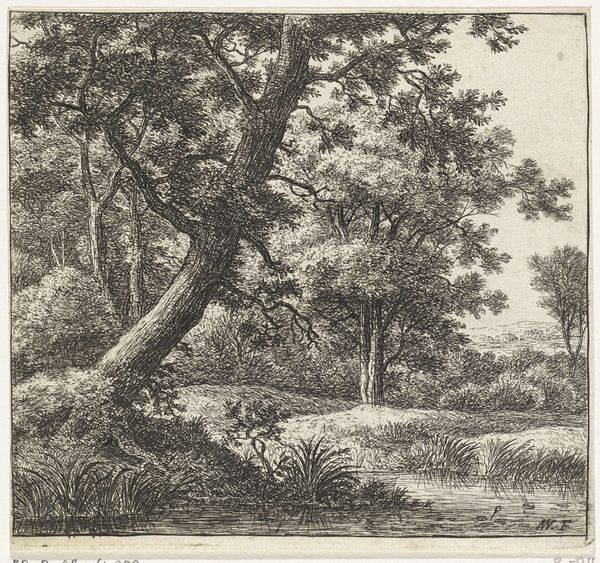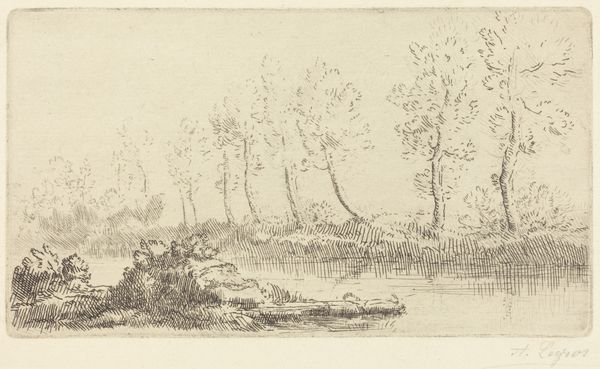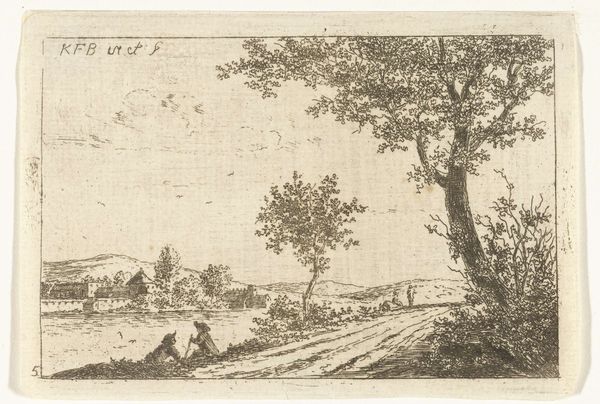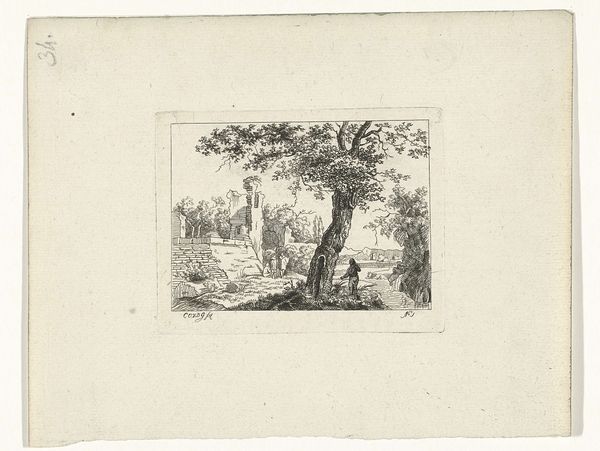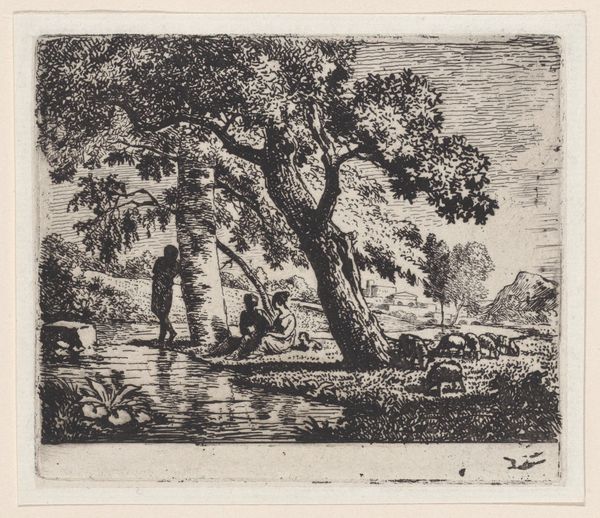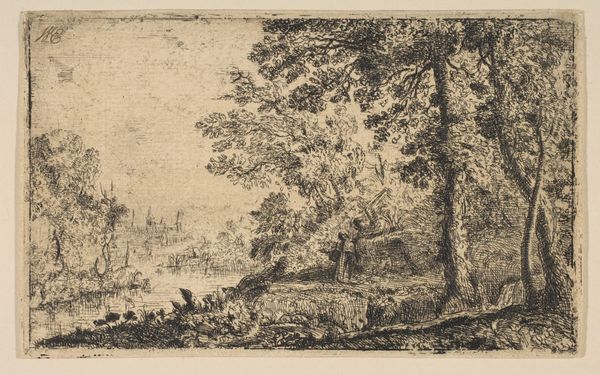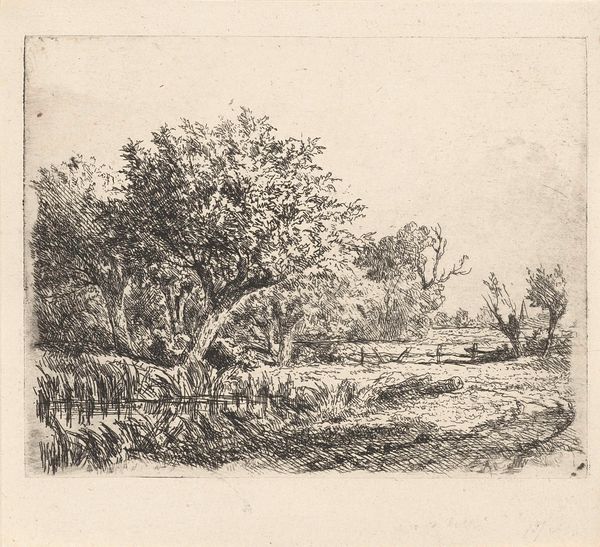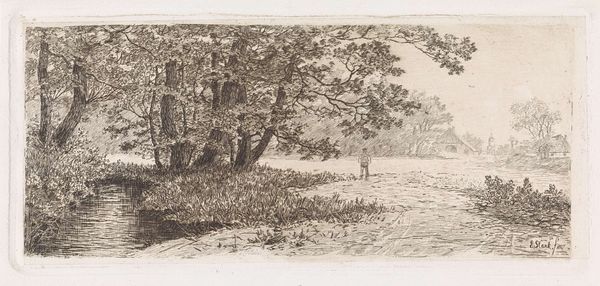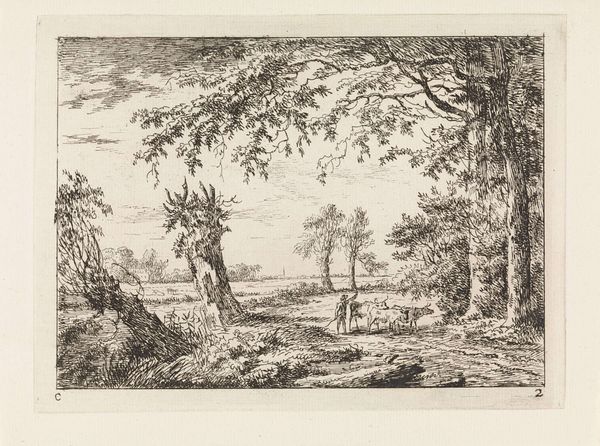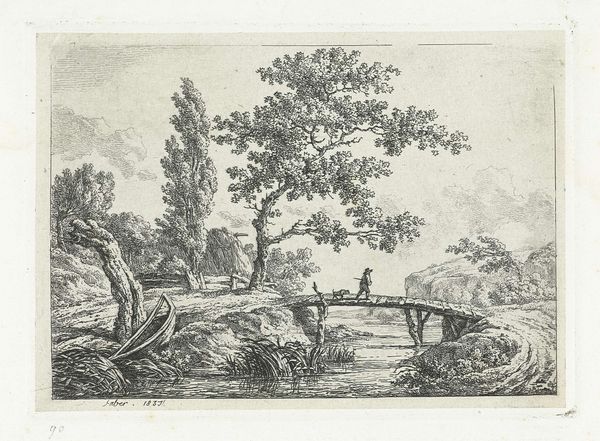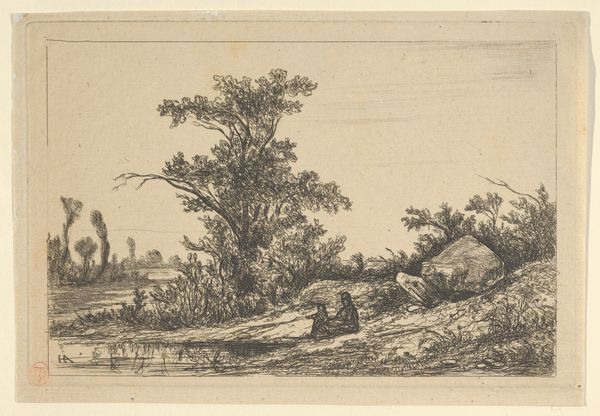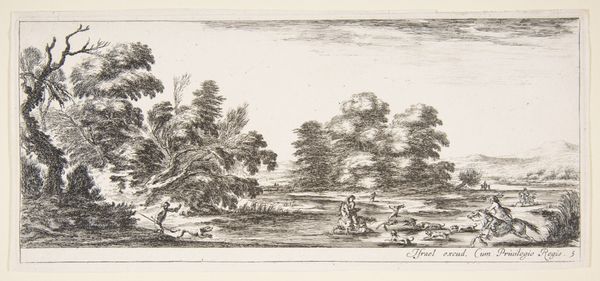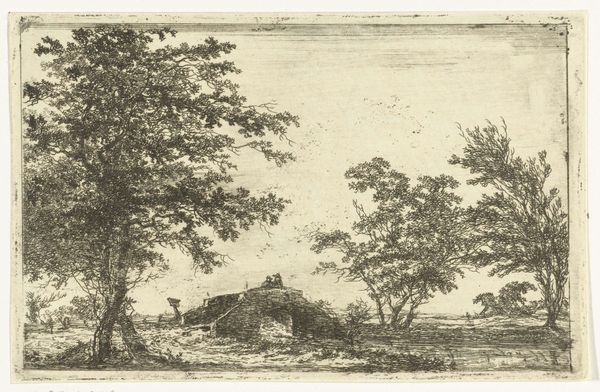
Dimensions: height 99 mm, width 181 mm
Copyright: Rijks Museum: Open Domain
Elias Stark made this landscape with two travelers in the late nineteenth or early twentieth century, using etching. The cultural context for this work is rooted in a growing sense of the individual’s place within the landscape. The image presents us with a slice of rural life. Stark shows two figures, likely travelers, resting by the roadside. A signpost behind them hints at the intersection of nature and society, suggesting the human impulse to map and navigate the world. Stark likely made this work in the Netherlands or Germany. The artistic institutions of the time favored realism and naturalism, influencing artists to capture the world around them. The image's meaning is tied to its social and institutional context. To understand such artwork better, one could look at travelogues, social histories, or even railway maps from the period. Art history connects the artwork to a particular time and place.
Comments
No comments
Be the first to comment and join the conversation on the ultimate creative platform.
